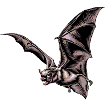Museum, University of Nebraska State

University of Nebraska State Museum: Mammalogy Papers
Document Type
Article
Date of this Version
5-1-1980
Citation
Journal of Mammalogy (May 1, 1980) 61(2): 224-236.
Abstract
A population of Pappogeomys castanops simulans was live-trapped on a 3.5-ha study area in Lubbock, Texas, from September 1971 to September 1973. Seasonal and annual differences in population size were observed, with the population fluctuating between 20 and 25 gophers. Female reproductive activity began in January and continued until October, with an obvious period of recruitment lacking; however, a peak was observed in March and April. Females produced as many as three litters per reproductive season. Females born early in the year were sexually mature within the reproductive season of their birth. Females had an average survival rate of 56 weeks in the trappable population as compared to a 31-week survival rate of males. Neonate through subadult survival of pooled males and females was 72.7%. The gophers had a clumped distribution on the study area, with more mature females forming the centers of the clumps. Subadults of both sexes and adult males were distributed peripheral to adult females. Adult females showed few shifts in their home range configuration whereas adult males and subadults of both sexes had more labile home range configurations. Females arranged their home ranges so as to provide isolation from other gophers. Males, on the other hand, tended to align their home ranges so as to contact more animals, especially mature females. Offspring dispersed from the maternal bur- rows as juveniles or subadults. Colonization frequently occurred adjacent to the maternal home range, although long distance moves also were observed. Once a home range was established, few shifts were observed.
Included in
Biodiversity Commons, Population Biology Commons, Terrestrial and Aquatic Ecology Commons, Zoology Commons


Comments
Copyright 2008, American Society of Mammalogists. Used by permission.